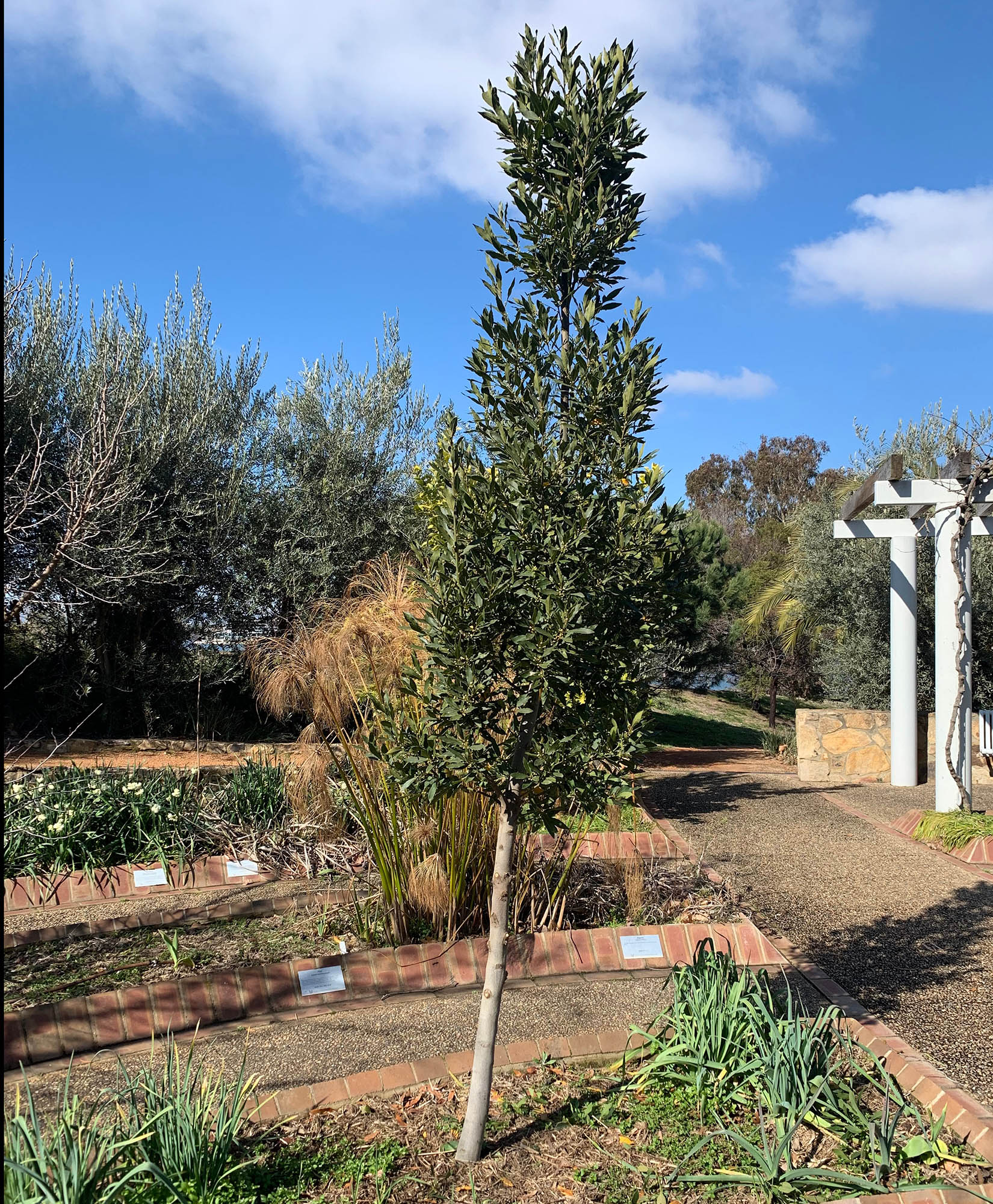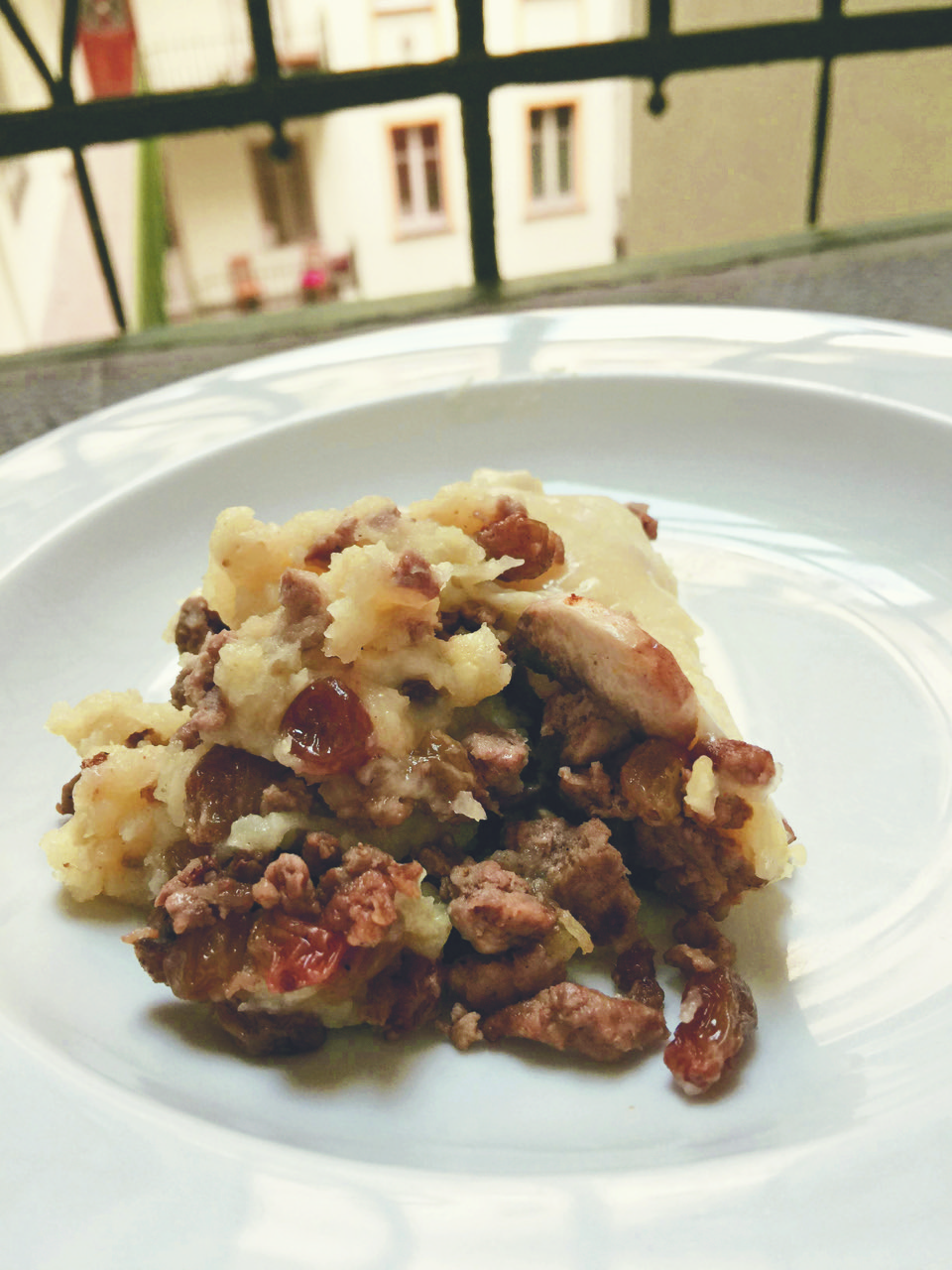The Bay Tree + recipe
05 Aug 2019 - by Katherine Waite
 Every couple of months we'll focus on one of the plants or trees of the Bible Garden. This month we're focusing on the Bay Tree.
Every couple of months we'll focus on one of the plants or trees of the Bible Garden. This month we're focusing on the Bay Tree.
Bay leaves, also called laurel leaves, grow on an evergreen plant. It can grow up to 15-20 metres and the one featured in the Bible Garden at the ACC&C is about 3 metres tall. The leaves are dark green, tough and aromatic. According to Jackie French, once the Bay Tree is established, nothing ‘the weather can fling at them is likely to kill them’[1] and Bible Gardener Justin Aquilina said the tree is very drought tolerant. He also said it’s a great indoor plant if it's near a window for ventilation. Male and female flowers grow on different trees but they are both greenish yellow in colour and the female flowers once fertilised develop into purple berries.[2] The berries can be cultivated for use in laurel oil or laurel butter.[3]
Bay leaves can be used fresh or dried in cooking. (See our recipe suggestion overleaf from the beautiful Tea and Thread book). Others recommend bay leaves to repel ants[4] and moths and bugs from cereals and flours (by placing in food container).[5] Put between a page of a book to repel silverfish too.[6]
The plants held a special place in ancient Rome and it was custom for emperors, athletes, and poets to be crowned with laurel leaves as a sign of victory, glory and peace. According to Blaire Montague-Drake in A Biblical Herbal, Paul was referring to the bay leaf in 1 Corinthians 9:25 when he spoke of athletes who were honoured with a corruptible crown, as distinct from the incorruptible crown of Christianity.[7] The popular expression, ‘To rest on one’s laurels’ alludes to the practice of a person achieving success and content to settle for no more.[8]
Here is a recipe which features bay leaves which is republished with permission Tea and Threads: portraits of middle eastern women far from home published by Grace Abounding Books To find where you can purchase a copy visit https://anglicanaid.org.au/tea&thread

This delicious stew contains a favourite ingredient in Middle Eastern cooking, noomi (dried lime), which gives this dish a distinctive taste. Speaking of distinctive tastes, Shahinez is not a fan of garlic even though many Middle Eastern dishes are packed with it. Usually, one cooks tashreeb with garlic, but you may prefer to omit it—in solidarity with Shahinez!
SERVES: 6
 INGREDIENTS:
INGREDIENTS:
6 lamb shanks
250g (1 lb 2 oz or 1 cup) dried chickpeas, soaked overnight, then drained*
2 noomi (dried limes) pierced twice, or thinly peeled rind of 1/2 lemon
1 garlic bulb, left whole, but washed and peeled of outer layer
60ml (2 fl oz or 1/4 cup) oil
1 large onion, finely chopped
500g (1 lb 2 oz or 2 cups) chopped, peeled tomatoes
60g (2 oz or 1/4 cup) tomato paste (concentrated purée)
1 teaspoon baharat spice blend, optional
3-4 bay leaves
salt and freshly ground black pepper, to season
2 large flat breads
METHOD:
Place the lamb shanks and chickpeas in a large saucepan and cover with cold water. Add the dried limes or lemon rind and the whole garlic bulb. Bring to a boil and simmer slowly, skimming the fat as required.
Meanwhile, heat the oil in a frying pan and gently fry the onion for 2-5 minutes. Add the tomatoes, tomato paste, baharat and bay leaves.
When the lamb is well-skimmed and simmering, add the tomato mixture and season with salt and pepper. Cover and simmer gently for 2 - 2 1/2 hours, or until the lamb is tender.
Remove the limes or rind, bay leaves and the garlic bulb and discard. Remove the lamb from the pan. Strip the meat from the bones and shred or cut into pieces, then return the meat to the pan.
Cut the bread into pieces and place at the bottom of each bowl or deep plate. Ladle the stew on top of the bread and serve.
*You may use a can of chickpeas instead, adding them 15 minutes before the end of the cooking time.
[1] French, J (2012, August 19) “Go for Gold: growing bays” Sydney Morning Herald https://www.smh.com.au/lifestyle/go-for-gold-growing-bays-20120815-248k0.html
[2] Woodward, P (2017, February 10) “Virtuous Bay” Organic Gardener https://www.organicgardener.com.au/blogs/virtuous-bay
[3] Cook, S (2010) “Grow a Bay Tree” Warm Earth (92) p14.
[4] Ibid.
[5] Woodward, “Virtuous Bay”.
[6] Ibid.
[7] Montague-Drake, B (1997) A Biblical Herbal Earth Images p30.
[8] Ibid.
- The Bible Garden
- latest news
- The Bay Tree + recipe

